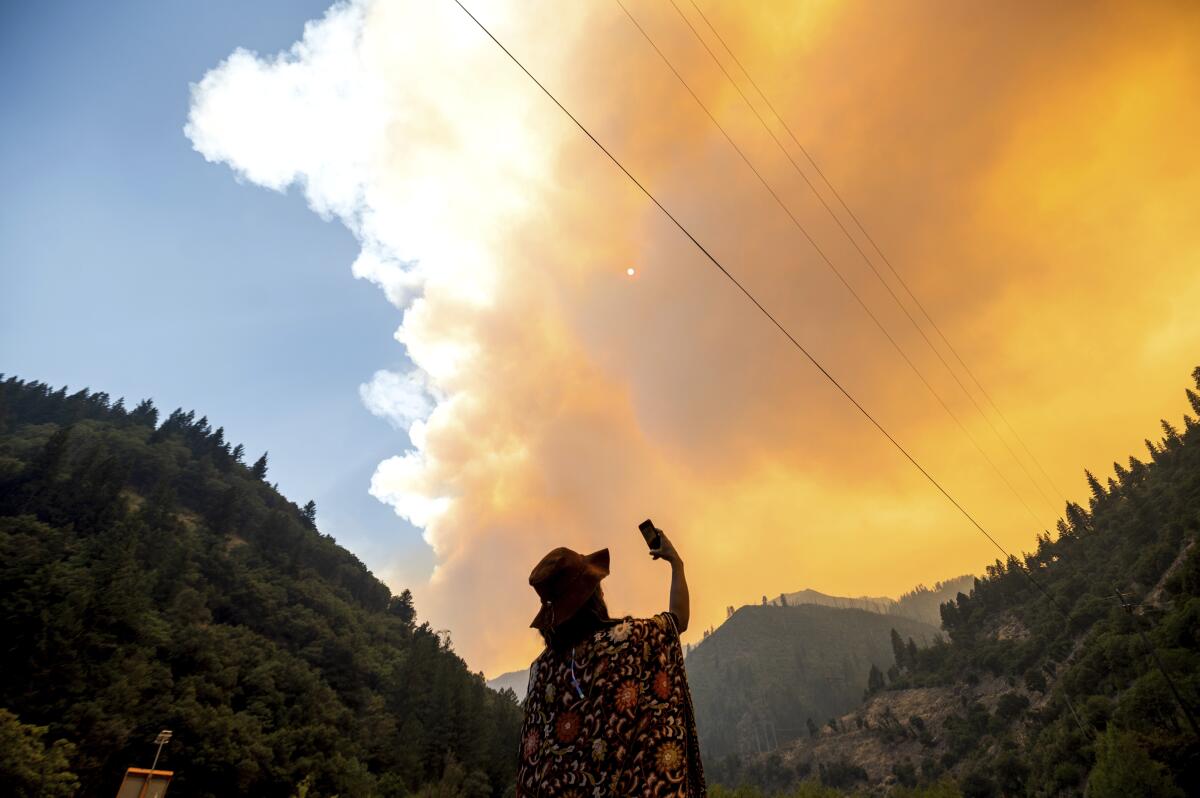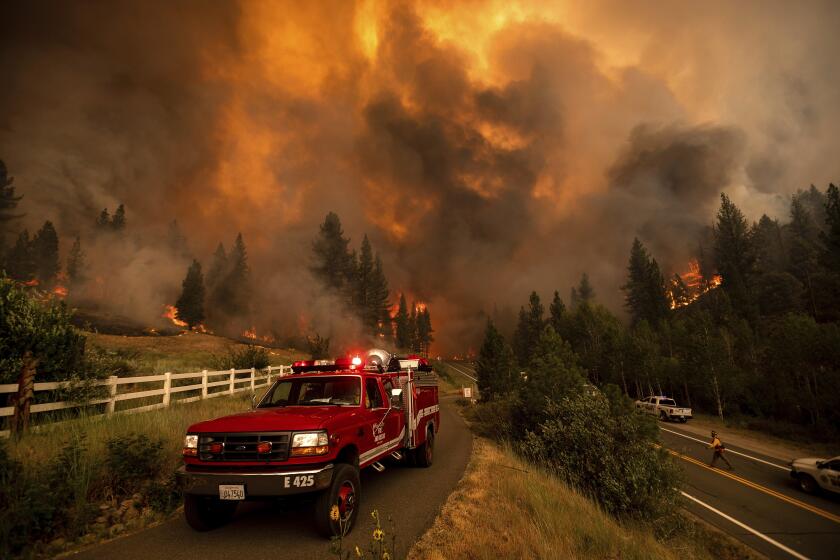Op-Ed: Wildfires never threatened my home. But my insurer said they do — and dumped me

- Share via
California’s wildfire insurance crisis came knocking at my door just a few weeks ago when my longstanding insurer abruptly dumped me.
I’m one of hundreds of thousands of Californians who have lost coverage on their homes as insurers invoke the problem of wildfire risk. I’m a former insurance commissioner of California. If it happened to me, it can happen to you.
Things weren’t always this dire for Californians. A few years ago, my insurance company assured me that if I took steps to protect my home, then my coverage would be renewed. I live in a hilly suburban area with lots of trees just 15 minutes from San Jose airport. At a cost of thousands of dollars, I put in state-of-the-art vents on all openings in my home where fire or wind-blown embers could enter; pruned trees to keep them away from a deck; and thinned foliage in my yard to create “defensible” space. No wildfire has ever threatened my home in the 25 years I have lived in Silicon Valley. Satisfied with my efforts, the company insured me year after year.
Fire suppression won’t stop the flames. We paradoxically need more fire, not less — targeted, site-specific reintroductions designed to restore ecosystem health.
Until this shocker hit my mailbox: My home is suddenly “ineligible due to the wildfire risk assessment of the dwelling location.”
I pressed to know more about this decision, but tight-lipped is an understatement to describe my insurance company. Eventually, the company revealed that it now relies on confidential software that predicts wildfire risk by geographic regions in California. But the insurer was unwilling to share details with me. The new approach ignores steps that people take to protect their homes by following guidelines from fire prevention authorities.
Getting non-renewed was just the beginning. My bank sent a letter warning me that if I don’t get insurance, it will buy it for me — at an exorbitant price — and only enough insurance to cover the amount of my outstanding loan balance, not the replacement cost of the home. I also received notice that I will lose my earthquake insurance.
But no other California-licensed company would cover me.
That left me with only the “non-admitted” market. This market consists of insurers that are only lightly regulated by the California Department of Insurance and that sell insurance on whatever terms and at whatever price they want. Historically, non-admitted insurers covered extreme risks, such as sawmills, blasting contractors and crane and rigging operations.
One non-admitted company immediately got back to me. To my surprise, it was an out-of-state affiliate of my longtime insurer. California law prohibits excessive rates for consumers. My insurer avoided that by abandoning me and then passing me on to an out-of-state affiliate that offered a policy at twice the price with half the coverage — effectively raising my premium fourfold.
If I were on a fixed income, this could literally drive me out of house and home.
As a last-ditch option, I can turn to a backup insurer known as the FAIR Plan. To do business in California, homeowner insurers must participate in the FAIR Plan. Californians who can’t access fire coverage from a traditional insurer turn to this state-mandated program. But FAIR Plan policies are more expensive, offer pared-back benefits and exclude coverage for such things as theft, vandalism and liability. (Some add-ons are available for hefty additional premiums.) The companies that make up the FAIR Plan resist expansion, and instead fight in court to limit its offerings. The same insurers that are leaving California residents like me behind are the ones restricting coverage in the FAIR Plan.
The common thread is a flawed insurance market that is not serving people’s needs. The problem is urgent as we move into fire season. I offer three suggestions:
State fire, insurance and emergency response officials release guidelines for keeping your home safer from wildfires.
First, the Department of Insurance should require insurance companies to disclose exactly how they come up with wildfire risk assessments of each home, including the “fire risk score,” which many insurers use, and the department should create an appeals process.
Second, the department should require insurers to base eligibility, renewal and non-renewal decisions on the actual risk presented by an individual home and the steps an owner takes to secure the home, and not on broad geographical areas that arbitrarily deprive hundreds of thousands of Californians of insurance.
Third, as the insurer of last resort, the FAIR Plan must offer full-fledged coverage commensurate with what people need, and the department should assure that the FAIR Plan’s rates are not excessive.
The Department of Insurance is considering a regulation that would compel insurance companies to consider a homeowner’s fire mitigation efforts in setting their rates. A hearing will be held Wednesday. But this regulation, while a start, still fails to address the industry’s wholesale abandonment of vast swaths of the state.
Climate change has intensified conditions that cause wildfires, and fire risk is rising. There have been more wildfires every year since at least 2017 and there is no sign that the trend will abate.
The insurance industry is understandably concerned about underwriting policies in the face of changing environmental conditions. But its approach — withdrawing protection for entire communities rather than evaluating homes individually — is unacceptable and unfair for the many Californians who are doing all they can to secure their properties from wildfire risk.
Steve Poizner was the insurance commissioner of California from 2007 to 2011.
More to Read
A cure for the common opinion
Get thought-provoking perspectives with our weekly newsletter.
You may occasionally receive promotional content from the Los Angeles Times.











